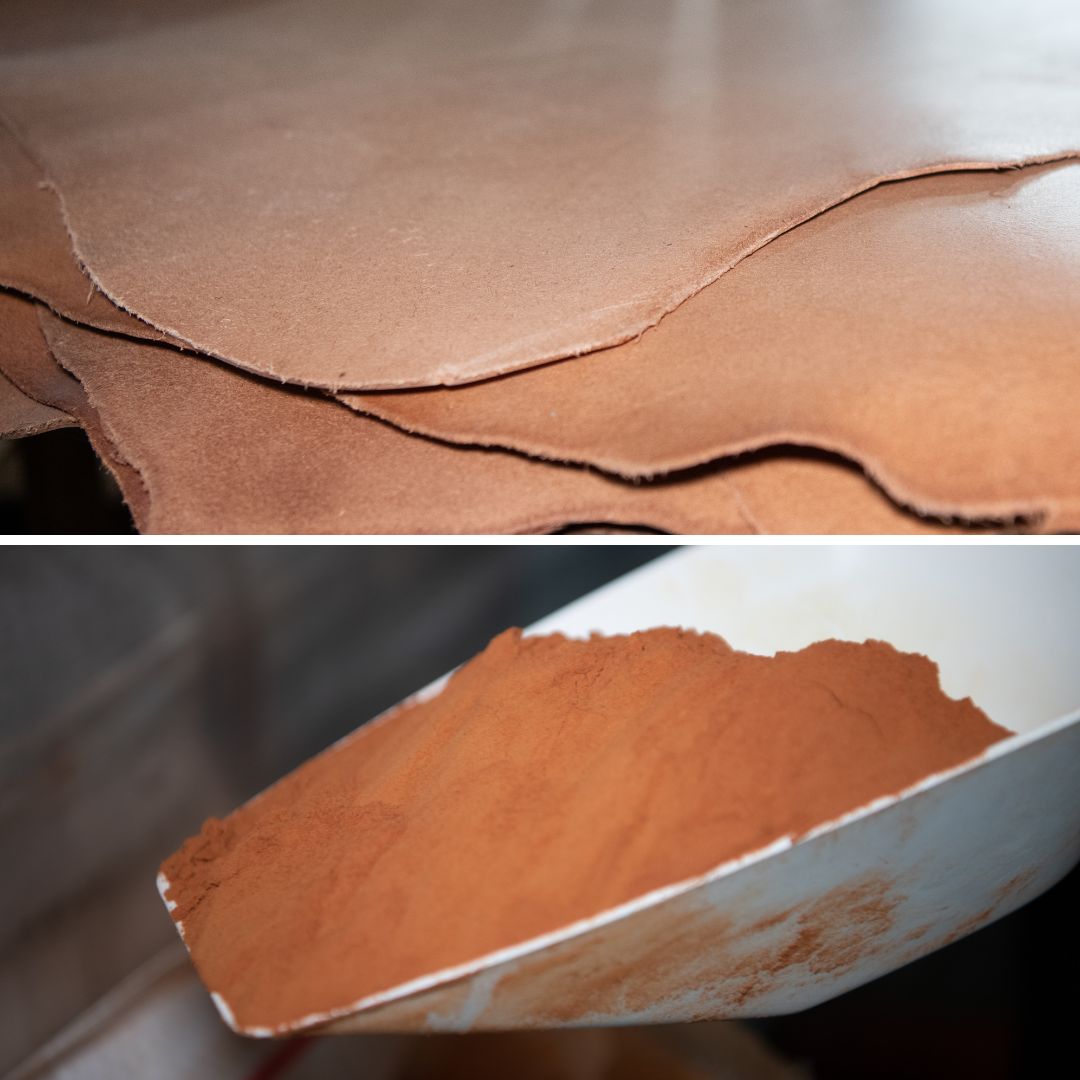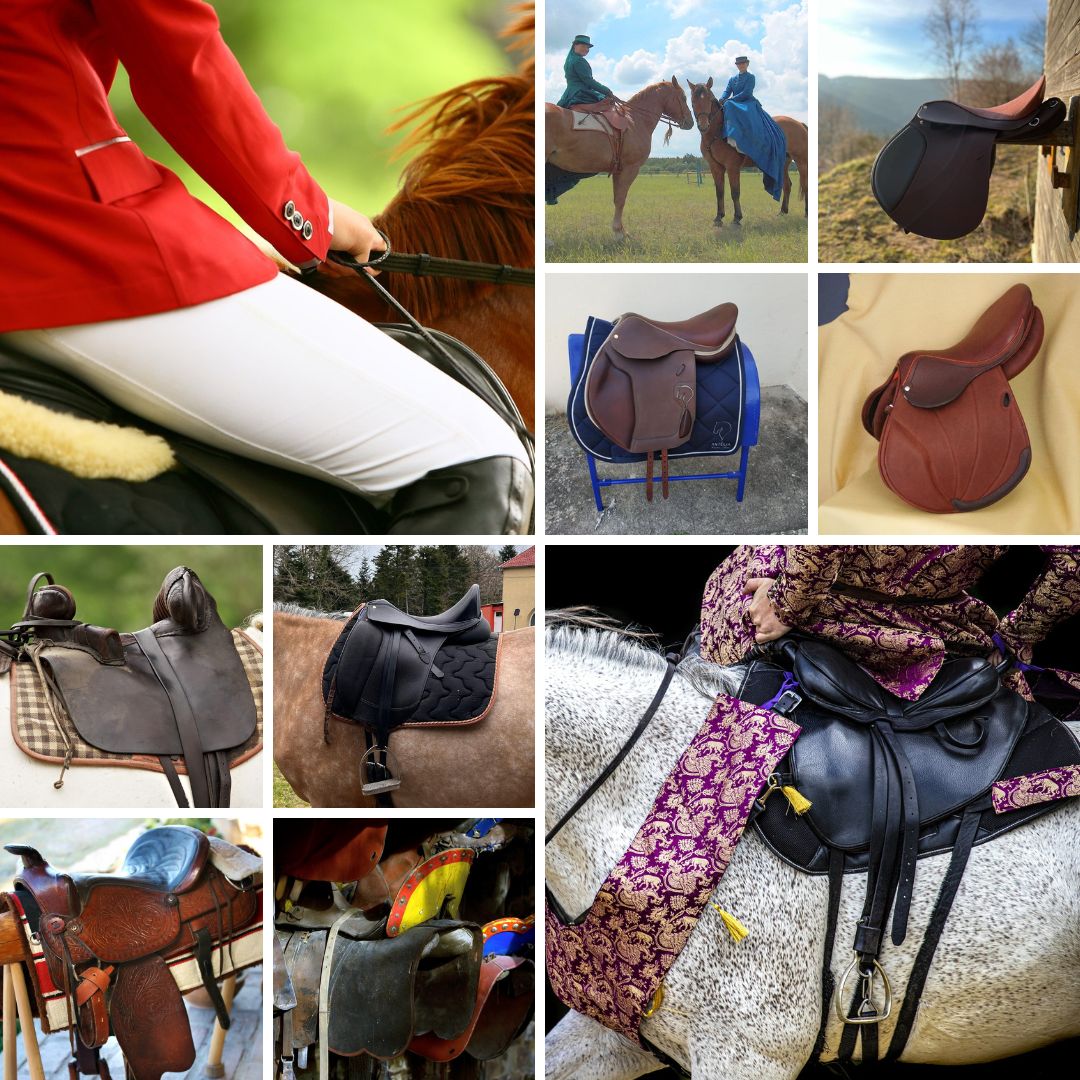In the world of fashion and craftsmanship, leather has long been a symbol of durability, sophistication and quality. However, not all leather is produced in the same way. Leather craftsmen, you've heard of vegetable-tanned leatheran ancient, environmentally-friendly method of transforming raw hide into a durable, authentic material. durable and authentic material.
As the majority of Radermecker Tannery's saddle leathers are vegetable-tanned, it was crucial to explain in detail what vegetable-tanned leather is, its advantages and disadvantages, and how to recognize it.
In concrete terms, what is vegetable-tanned leather?
First and foremost, leather tanning is a process that transforms hide into leather. This operation transforms hide from a putrescible to a rot-proof material: leather.
There are 2 methods of leather tanning: vegetable tanning and mineral tanning.
Vegetable tanning is a traditional method that has been used for centuries. Our ancestors used animal skins to protect themselves from the elements, and discovered that certain plants had the power to transform these skins into a more supple, durable and resistant material. The first vegetable tanning methods were therefore very primitive. The practice has, of course, evolved into a refined craft, combining tradition with modern technology.
Unlike mineral tanning, vegetable tanning requires the use of natural vegetable tannins, such as plant extracts or powdered bark from quebracho, mimosa or chestnut trees. The choice of tannins used depends on the animal species from which the hide comes and the properties required for the leather.
The advantages and disadvantages of vegetable-tanned leather
One of the main advantages of vegetable-tanned leather is that it is a natural product, free from harmful chemicals. The tannins used in the vegetable tanning process are environmentally friendly and biodegradable. Vegetable-tanned leather is therefore eco-responsibleVegetable-tanned leather is therefore an eco-responsible leather, respectful of the environment not only because of the tanning process itself, but also because vegetable-tanned leather can be recycled.
Another advantage of vegetable-tanned leather is its natural look and unique feel, provided the leather is neither pigmented nor plasticized. Natural tannins give the leather a unique patina that develops over time, making every item made with vegetable-tanned leather unique. Patina is a natural change that occurs on the surface of leather over time. As leather is exposed to the elements and daily use, it develops a unique patina, unique to each piece of leather.
Vegetable-tanned leather ages gracefully over time, gaining in softness and suppleness as it ages. Vegetable tanning preserves the leather's natural fibers, preventing it from cracking or degrading over time.
In the photos below, you can see the patina of a bag made by Marlies Davans in Niagara leather after 7 years of use:
One of the main disadvantages is that the vegetable tanning process takes a long time, unlike the mineral tanning process which takes just a few hours, and is therefore more expensive. and is therefore more costly.
Vegetable-tanned leather, especially when combined with an aniline finish, can also be more sensitive to water and stains. As Radermecker Tannery's saddle leathers are mainly dedicated to the equestrian environment, Niagara leathers (in shoulder and half-back), Boyoma (half-back) and Boyoma stretchedbenefit from tallow bath feed a mixture of beef fat and paraffin. This process is unique to Radermecker Tannery, and results in deeply nourished leather that is easier to cut and work, and more resistant to water. Tallow ensures maintenance-free leather, as the grease is constantly added to the leather's surface, giving it the nourishment it needs and a beautiful patina. Niagara leather is maintenance-free.
Another disadvantage of vegetable-tanned leather is the limited number of colors and shades available. Vegetable-tanned leather does not allow for vivid hues that do not evolve over time.
The differences between using vegetable-tanned leather and mineral-tanned leather
Vegetable-tanned leather, like our Niagara leather, tends to be stiffer and less supple than mineral-tanned leather. Our Boyoma leather, double tanned (vegetable tanned with mineral retanning), will therefore be softer than our Niagara leather. However, vegetable-tanned leather will become softer with time and use.
Mineral-tanned leather is often softer from the outset than vegetable-tanned leather. This makes it more suitable for applications where immediate suppleness is desired.
For example, a pair of reins made with our Niagara leather (vegetable tanned) has a firmer hand than with our Boyoma leather (double tanned).
Recognizing vegetable-tanned leather
You want to know if your leather is vegetable-tanned, but it's not always easy to identify the origin of the tanning process. There are several ways to find out, but only one is unstoppable, and we'll explain it to you:
Vegetable-tanned leather often has a pleasant natural scent. As explained, vegetable-tanned leather can be stiffer than mineral-tanned leather, and its texture can be slightly irregular, showing natural variations. Depending on the finish applied to the leather, natural marks, scars and other imperfections may be visible. In addition, vegetable-tanned leather reacts to environmental elements, developing marks and color variations with exposure to sunlight, humidity, etc.
These elements for recognizing vegetable-tanned leather are of course subjective and also depend on basic knowledge.
An unbeatable method for recognizing vegetable-tanned leather is what we at Radermecker Tannery call "The Flame Technique", which we already mentioned in our blog post "Vegetable-tanned leather, how to recognize it?and whose video we're sharing with you here:
By exploring the world of vegetable-tanned leather, we discover a craft that goes beyond simple leather processing. It's a cultural heritage, an environmentally-friendly approach and a celebration of timeless beauty.











